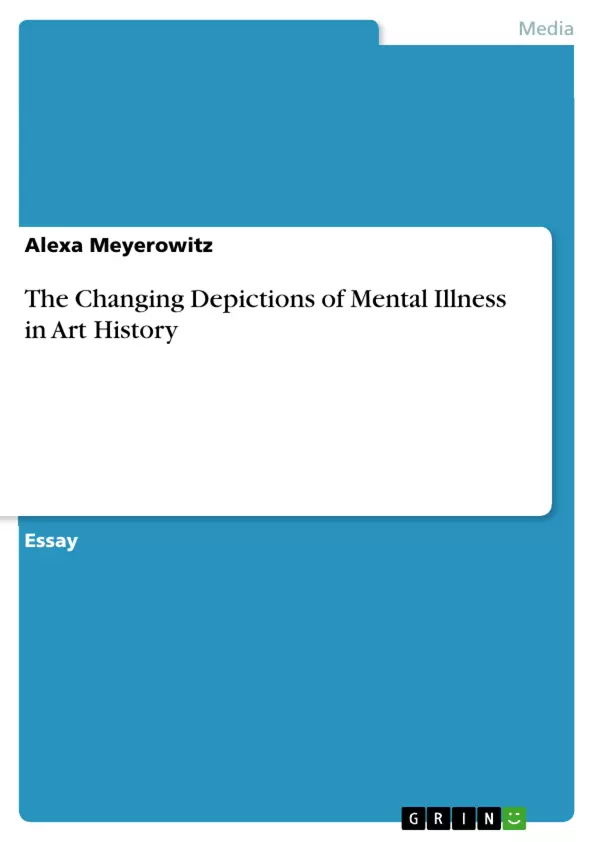This essay demonstrates the progression of psychological depictions in art, and thus representations of mental illness throughout art history. Early Renaissance artists such as Vittore Carpaccio and Matthias Grunewald interpret mental illness through the lens of religious and spiritual imagery. Later Renaissance artists such as Albrecht Durer were impacted by the changing social, cultural and economic landscape of the 16th century. Romantic artists such as Fransisco Goya and Theodore Gericault use romantic imagery and realism to depict man’s internal melancholy and anxiety. The cultural momentum of the Weimar Period heralded an era of “Outsider Art”. Resulting in a cultural landscape that both feared and revered work made by those with mental illness.
Inhaltsverzeichnis (Table of Contents)
- Renaissance Artists and Mental Illness
- Vittore Carpaccio's "The Healing of the Possessed Man at the Rialto"
- Matthias Grunewald's "The Temptation of St. Anthony"
- From Religious Imagery to Scientific Thought
- The Romantic Age and Depiction of Mental Illness
- Franscisco Goya's "The Sleep of Reason Produces Monsters"
- William Hogarth's "Rake in Bedlam"
- Theodore Gericault's "Portraits of the Insane"
- The Rise of "Outsider Art"
- The Prinzhorn Collection
- Alfred Kubin's "The Art of the Insane"
- The Berlin Entartete Kunst Exhibition
Zielsetzung und Themenschwerpunkte (Objectives and Key Themes)
This essay examines the evolution of artistic representations of mental illness throughout history, highlighting how these portrayals reflect changing cultural and societal understandings. By exploring specific artworks and their contexts, the essay aims to showcase the diverse approaches taken by artists to depict the human experience of mental illness.
- The interplay of religious and spiritual perspectives in early depictions of mental illness
- The impact of the Renaissance on evolving conceptions of mental illness as a human condition
- The development of Romantic art and its exploration of internal states of mind and melancholia
- The emergence of "Outsider Art" as a powerful expression of the human experience
- The cultural stigmatization of mental illness in the 20th century and its devastating consequences
Zusammenfassung der Kapitel (Chapter Summaries)
The essay begins by exploring early Renaissance artworks that depict mental illness through the lens of religious and spiritual imagery. Vittore Carpaccio's "The Healing of the Possessed Man at the Rialto" and Matthias Grunewald's "The Temptation of St. Anthony" illustrate how artists of this era interpreted mental illness as a spiritual affliction.
The essay then shifts to the later Renaissance, focusing on the emergence of humanism and its influence on the depiction of mental illness. Albrecht Durer's "Melancholia" embodies this transition, showcasing the emergence of the "artistic genius" concept.
The essay further delves into the Romantic age, highlighting artists' increasing interest in portraying extreme states of mind and internal suffering. Franscisco Goya's "The Sleep of Reason Produces Monsters" and William Hogarth's "Rake in Bedlam" illustrate the complexities of representing mental illness and its potential for both creativity and societal ostracism.
The essay then explores Theodore Gericault's "Portraits of the Insane," emphasizing the artist's attempt to portray the mentally ill with dignity and empathy, moving away from the sensationalism of earlier periods.
Schlüsselwörter (Keywords)
Mental illness, art history, Renaissance, Romantic art, Outsider Art, Prinzhorn Collection, Berlin Entartete Kunst, stigmatization, cultural context, artistic representation, psychological experience.
- Arbeit zitieren
- Alexa Meyerowitz (Autor:in), 2019, The Changing Depictions of Mental Illness in Art History, München, GRIN Verlag, https://www.hausarbeiten.de/document/495832


